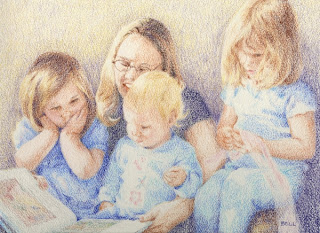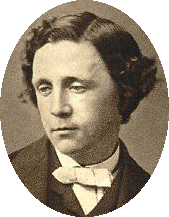By the time children reach 8 years old, most have a strong sense of what they think ‘looks good’. They enjoy making things they can actually use, and have the motor skills and co-ordination to start creating quite complicated projects.
When you’re thinking about arts and crafts for children in this age group, think of projects which provide a practical use once the creative part is over. Give your kids the ideas and materials, and then let them explore and experiment on their own. While art and craft techniques can be taught, the only way your child will truly learn is to try it out for themselves.
Cool Clipboard
It’s about this age that children start to really take ownership of their room, so they will enjoy making this clipboard to hang on their wall or door. The clipboard is like a mini notice board where you can leave them messages, or clip on important notes and things to remember. They can also use it to clip on certificates, photographs, and reminders of their own.
You will need:
- A Plain Wooden A4 Clipboard (from a stationery store)
- Masking Tape
- Blackboard Paint (Available from hardware stores)
- An empty film cannister or other small container
- Patterned Paper (Scrapbooking and wrapping paper works well)
- Double Sided Tape
- Clothes Pegs or Bulldog Clips
- Hot Glue and Glue Gun
- Ribbons, Stickers, and Embellishments for decoration
- Small Notepad
- Use the masking tape to run a line across the clipboard about 2/3 of the way down.
- Paint the bottom 1/3 of the clipboard with blackboard paint. (Blackboard paint comes in either brush on or spray on versions, and both types will require at least 2 coats).
- Once the blackboard paint is dry, remove the masking tape to reveal a nice straight line. Make a chalk holder by gluing a film canister to the side of the clipboard using hot glue.
- Using double sided tape, stick the patterned paper over the remaining part of the clipboard, and decorate down each side using ribbons, stickers and embellishments.
- Using hot glue, stick clothes pegs or bulldog clips across the bottom of the clipboard. If you like, you can also glue pegs or clips down each side.
- Secure the notepad under the clip and your child has a ‘cool’ clipboard for their room.
‘Do Not Disturb’ Signs
Every child goes through a stage of wanting to keep everybody out of their room, so this sign will definitely come in handy. Simply
download our door hanger template (see below), glue it on to heavy card, and then cut it out. Let your child decorate it and add their own words - depending on the message they are trying to get across, and what you think is appropriate. They could make several signs, so they have one for every circumstance (or mood!).
Popular messages are:
- No Boys Allowed
- No Girls Allowed
- Homework in Progress
- Sleep in Progress
- Please let me Sleep-In
- Call Me for Dinner
- Knock Before Entering
- Please Knock
- Tidying My Room – Do Not Disturb
- Tidying My Room – Help Wanted
- Booby Trap Set – Enter at Own Risk
Junk Jewellery
Jewellery Making is undoubtedly popular with girls at this age, but even some boys like to make surfie styled bracelets or charms for their bags. There are great jewellery making kits available to get you started, but you can make some interesting jewellery using everyday items from around the home. These ideas are a great place to start.
- Stitch or thread buttons on to a piece of narrow elastic, and tie the ends together to form a bracelet. Collect up your loose or spare buttons from home, or rummage through second hand shops to find ones that are really interesting.
- Make your own charms for a charm bracelet by simply drilling a hole, and attaching a jump ring (from a craft store) to everyday items. Old 5c pieces, board game counters, puzzle pieces, keys, shells and bottle tops all make fun looking charms. If you don’t have a charm bracelet to attach them to, you can buy a blank bracelet from any good craft store or bead shop for about $5.
- Create paper beads for jewellery making by ripping long strips of coloured paper or magazine pages, and rolling them around a skewer. Paint a layer of PVA glue around the outside to hold everything in place, remove the skewer, and it’s ready to thread.
- Make an earthly treasures necklace by threading shells, dried or plastic flowers, feathers, and small pieces of driftwood onto a piece of leather.
For more information about Jewellery Making and how to get started, check out the
Jewellery Making article in our Activities section.
Paper Mache Pencil Case
This project will suit both boys and girls, and with a little bit of imagination, they’ll create something truly cool.
You will need:
- A clean plastic container with a screw on lid.
The best kind are the ones that health shakes come in, but if you look in your pantry, you are bound to find something that will work.
- Newspaper
- Wallpaper Paste (Available from hardware stores)
- 2-3 sheets of plain white paper
- Paints and Brushes
- Make up the wallpaper paste using the instructions on the packet, and set it aside to gel. If you don’t have wallpaper paste, you can use a mixture of flour and water, but be aware that your paper mache will eventually go mouldy unless you add a preservative.
- Dip the strips of newspaper into the glue, and begin covering the whole container and the lid. Make sure the strips of paper overlap each other.
- Once the first layer of paper mache is on, your child can start adding 3D bumps and decorations. Simply roll, bend, or squash up pieces of newspaper to form the desired shapes, and then stick them onto the side of the case using long strips of gluey newspaper, just like you would a piece of tape.
- Once all the 3D decorations are ‘taped’ on, continue layering strips of paper all over the pencil case, until it is covered in several layers.
- Use your white paper to do a final layer of paper mache, and set the pencil case aside to dry.
- After 24 hours, the pencil case can be painted and decorated using whatever you choose.
Giant Game Mat
This activity can be as simple or as elaborate as you choose, and it can keep getting added to as time goes by. All you need is an old tarpaulin, some permanent markers, and lots of imagination.
Lay the tarpaulin out on the floor, and ask your child to draw out their very own NZ city. They can mark in the roads, parks, schools, shopping centres, farms, orchards, amusement parks, lakes, rivers, beaches … you get the picture!
Once everything is mapped out, they can begin building all the bits and pieces using cardboard and collage materials. They’ll need to make things like buildings, fences, bridges, playgrounds, road signs and traffic lights. Finally they get to add their own toys to the mat, like cars, farm animals and play-people, and the game mat is ready to use.
Getting Started
At this age, all your child needs to do arts and crafts is some basic materials and the freedom to use their imagination. Gather a box of card, ribbon, fabric, glue, scissors, wrapping paper, and all sorts of recycled scraps, then let them go to it. You’ll be amazed by what they create, and chances are you’ll wish you thought of it first.
~Happy Crafting!~



